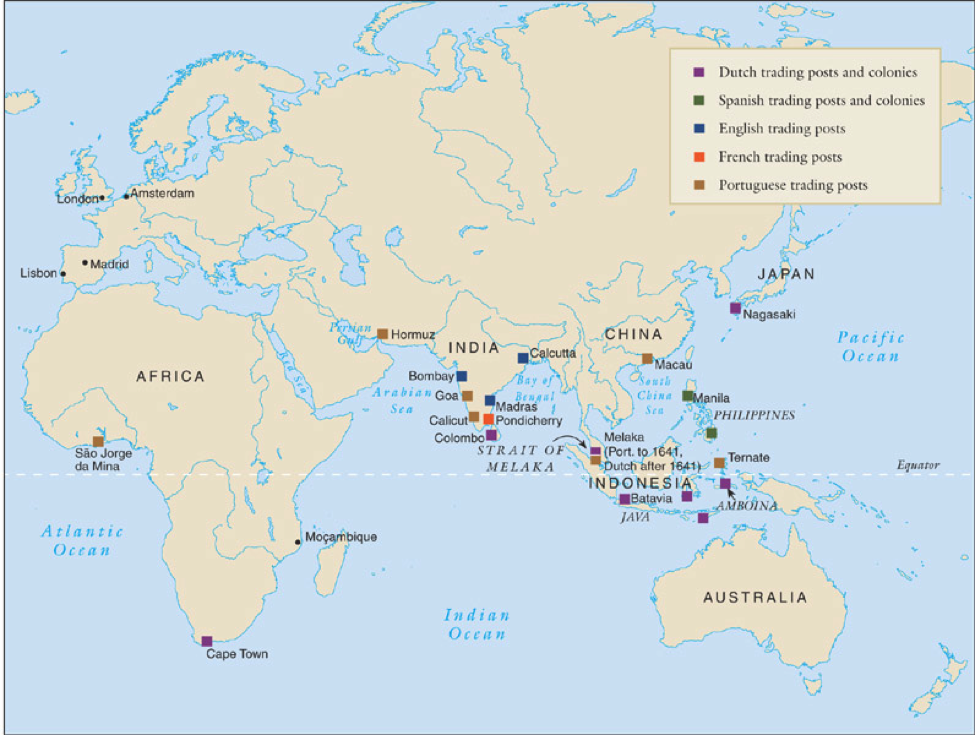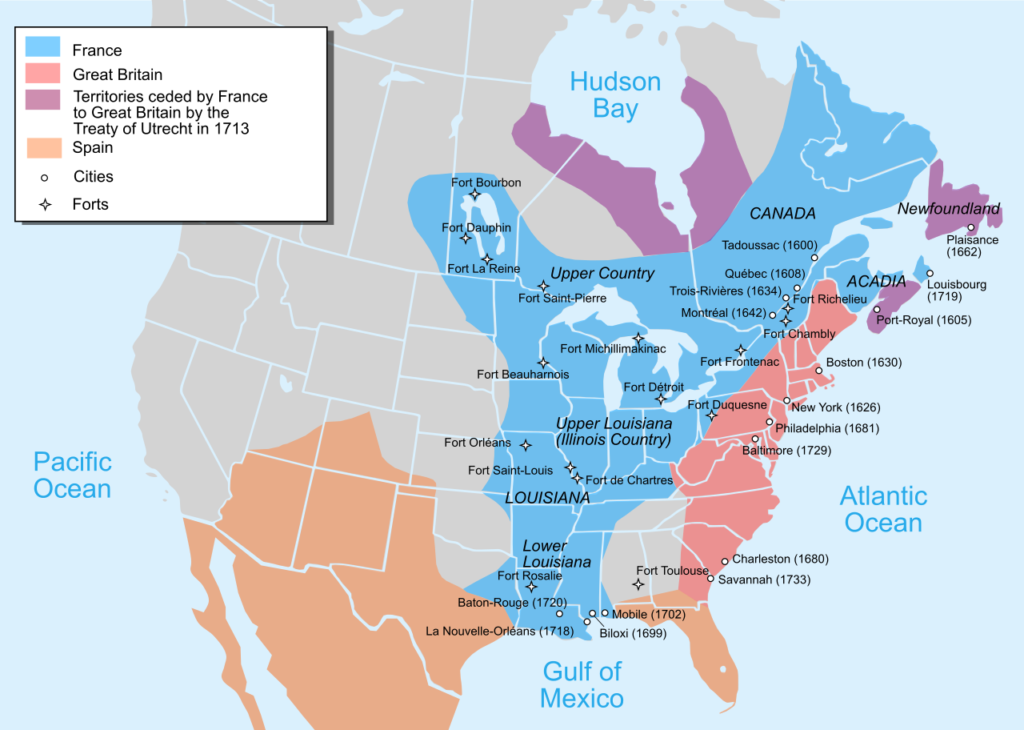
Three Forms of European Expansion

Reading Maps
European expansion into the Americas, Africa, and Asia took three forms: conquest, commerce and colonial settlement.
1. Conquest
Conquest took place where there was a large indigenous population and Europeans succeeded in defeating a preexisting state apparatus and then ruled, directly or indirectly, in its place. In the Americas, conquest took place in Mexico and Peru. In Africa, it took place only in Angola.
How was it that 600 Spanish soldiers were able to conquer the Aztec Empire in Mexico and just 110 foot soldiers and 67 cavalry able to conquer the Inca Empire in Peru?
At one time, the answer was said to lie in the Europeans’ overwhelming military superiority, with guns, horses, and steel weapons making the difference.
In fact, European weaponry was not decisive. Armored cavalry and projectile weapons were not especially effective in the New World. The Europeans were seriously outnumbered and their weapons were slow to fire.
Conquest succeeded not because of Spain’s military superiority but because the Spanish Conquistadors were able to play groups against one another. In Mexico and Peru, the Spanish succeeded by forging military alliances with groups that had been subjugated by the Aztecs and Incas. And Spain succeeded in governing its empire by working through their allies existing systems of government. The Spanish recognized the indigenous rules and gave these “caciques” rights to land.
Europeans were also aided by disease, which demoralized and weakened the Indian population.
2. Commerce

Commerce took place where the Europeans were unable to defeat the native population militarily, both because of the fighting prowess of the indigenous people or of the small number of Europeans willing to migrate.
With the exception of Angola (conquered by Portugal in 1575) and a number of small islands off the coast of Africa and the Philippines (conquered by Spain in 1570), Europeans were unable to conquer any parts of Africa or Asia. All the Europeans were able to do was establish trading centers to import spices, silk and porcelain from East Asia and gold, ivory and slaves from Africa.
By the mid-sixteenth century, Portugal had already established fifty trading posts. England would concentrate on trade with India; the Dutch in Cape Town in what is now South Africa, Colombo in what is now Sri Lanka, and the southern Pacific, especially Java (or what is now Indonesia). To support trade, England and the Netherlands established government-supported trading companies. The English East India Trading Company was established in 1600 and the Dutch United East India Company (VOC) in 1602.
In French Quebec, relatively few French were willing to migrate, probably fewer than 3,000. Those who did engaged in trade with the Indians usually involving beaver furs. Few French women migrated and a large mixed race population arose.
3. Colonial Settlement
Settler colonies arose where the indigenous peoples were not powerful enough to expel the invaders and not producing enough wealth to make it worthwhile to allow them to continue to rule.
The first colonies were on islands off the coast of Europe such as Madeira, the Azores, the Cape Verde Islands, and Sao Tome, which were all colonized before Columbus sailed to the New World. These were followed by the Caribbean, coastal Brazil and coastal North America, beginning with Spanish Florida and moving northward.
England was especially likely to form settler colonies in the Caribbean and North America. In contrast to the Spanish and Portuguese, the English, for the most part, did not intermarry with Indians. Instead, the English displaced the indigenous peoples and repopulated the area with English settlers and, over time, with enslaved Africans. This process of displacement is known as “plantation settlement.”
Lacking conquered or enslaved Indians, the northern Europeans relied initially on indentured servants from their homelands. These servants agreed to a contract to labor for a period of time with the promise that they could become landowners at the end of their term. The term was three to seven years in length. Faced with growing difficulty in attracting indentured servants, the English increasingly relied upon enslaved Africans as a source of labor.

Thinking Comparatively
Differences Between Spanish, French, and English Colonization
One important difference in Spanish, French and English colonizers was in their attitude toward the indigenous population. The Spanish viewed the Indian population as a usable labor force that could be used to mine for gold and silver, raise agricultural crops, and work in primitive factories. The French in Canada regarded the Indians as trading partners and military allies. The English, in general, had no interest in coexistence. For Spain, the removal or extermination of the Indian population was not a feasible possibility since, despite the impact of disease, the Indian population remained very large. But in the areas settled by the English along the Atlantic coast, the Indian population was more loosely spread out over large areas.

England’s first experience with colonization took place in Ireland, which carried far-reaching implications for the treatment of Native Americans. The English during the fifteenth and sixteenth centuries viewed the Irish as barbarians who were only nominally Christian. The English sought to push the Irish out of desirable areas and replace them with English or Scots.
Another key difference lay in the number and sex ratio of the populations. Not only would the English migrate in much greater numbers, but their sex ratio was much more even than among the Spanish or French. A third difference was that while the Spain’s New World Empire and, to a lesser extent, the French, were centrally controlled, the English colonies, initially, were far more decentralized, with private groups or companies responsible for their founding.